Creating a healing space in your home can dramatically improve your mental well-being and provide a sanctuary from the chaos of daily life.
When designed thoughtfully, a healing room becomes your personal retreat for relaxation, recovery, and rejuvenation
Embrace the Power of Biophilic Design
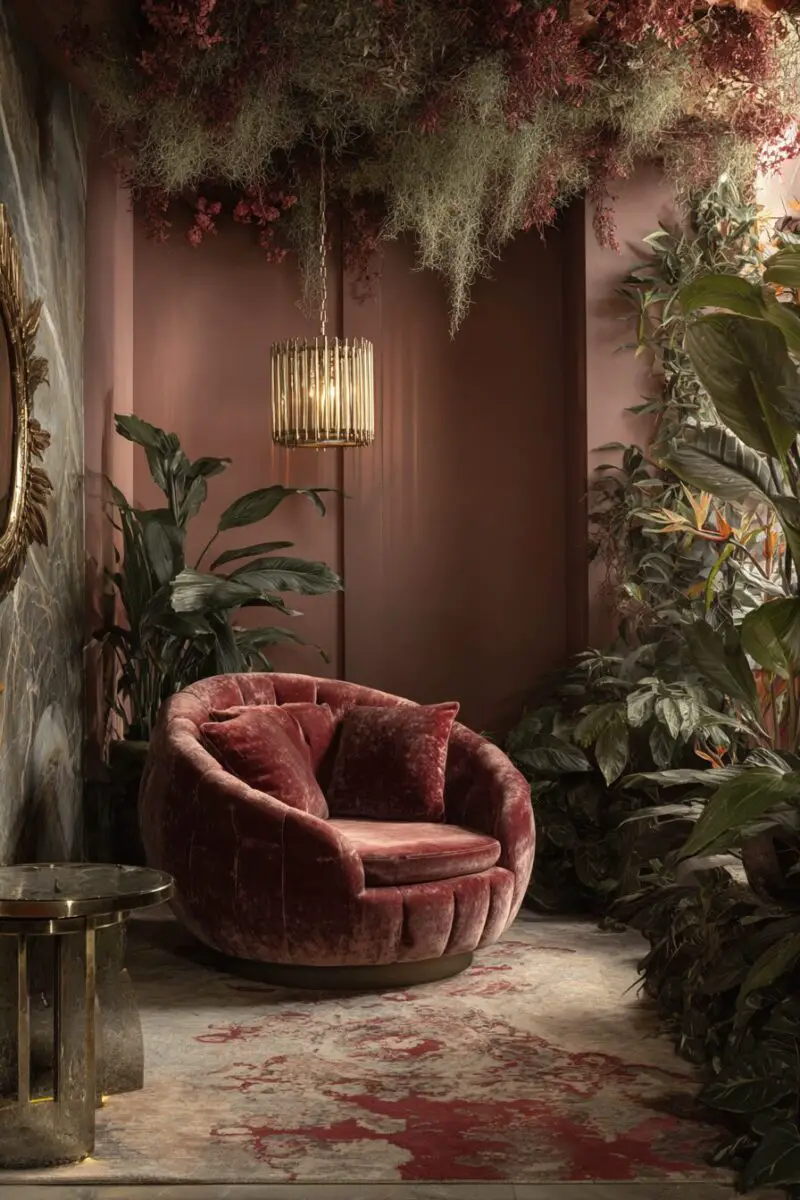
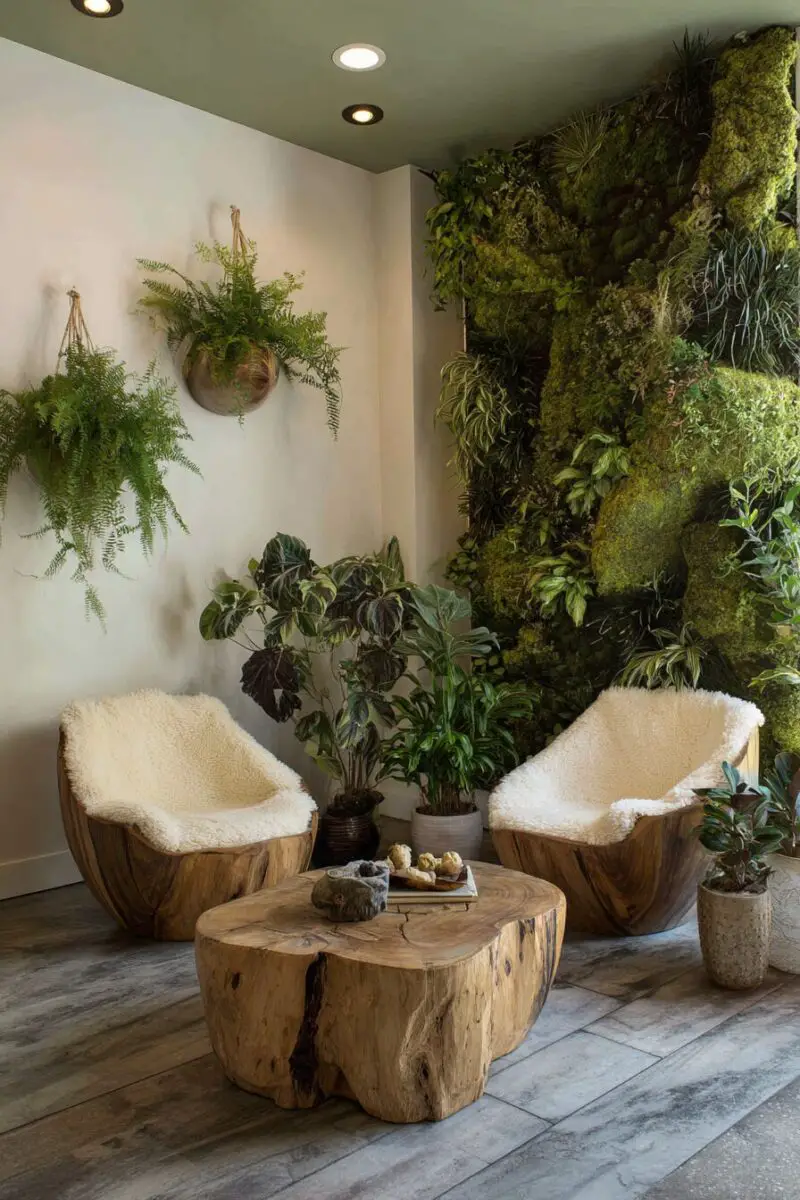
Nothing connects you to healing energy quite like bringing the outdoors inside through lush, vibrant plants.
Living plants literally clean your air while providing a visual connection to nature that humans instinctively find calming.
For maximum impact, cluster plants of varying heights in corners or create a stunning living wall that becomes the focal point of your healing space.
The natural patterns found in leaves and branches, known as fractal patterns, have been scientifically proven to reduce stress levels just by looking at them.
Beyond potted plants, incorporate other natural elements like driftwood sculptures, stone accents, or a tabletop fountain with smooth river rocks.
Natural materials like bamboo, rattan, and unfinished wood bring organic textures that ground your space in earthy comfort.
A small indoor water garden with floating plants can become a meditative focus that combines multiple healing elements in one beautiful feature.
Preserved moss walls require zero maintenance while providing the visual texture and color of living plants.
Hang botanical prints or pressed leaves in simple frames to reinforce the nature theme without requiring any care.
Window treatments that maximize natural light while maintaining privacy will help your plants thrive while boosting your mood through sunshine exposure.
The scent of fresh herbs like lavender, mint, or rosemary adds another sensory dimension to your biophilic design approach.
Rattan or woven grass baskets make perfect planters while adding natural texture to your decor scheme.
A living wall divider can separate your healing space from the rest of your home while providing air-purifying benefits.
Even artificial plants can provide visual benefits if they’re high-quality and thoughtfully arranged among real specimens.
Green is inherently the most restful color for human eyes, making plant-based decor particularly effective for creating a restorative environment.
Seasonal rotations of flowering plants can keep your space feeling fresh and connected to the natural rhythms outside your windows.
Remember that caring for plants can itself become a mindful, healing practice that enhances the benefits of your sanctuary space.
TRENDING NOW
15+ Creative Reading Nook Ideas for Any Small SpaceCreate Layers of Gentle, Adjustable Lighting
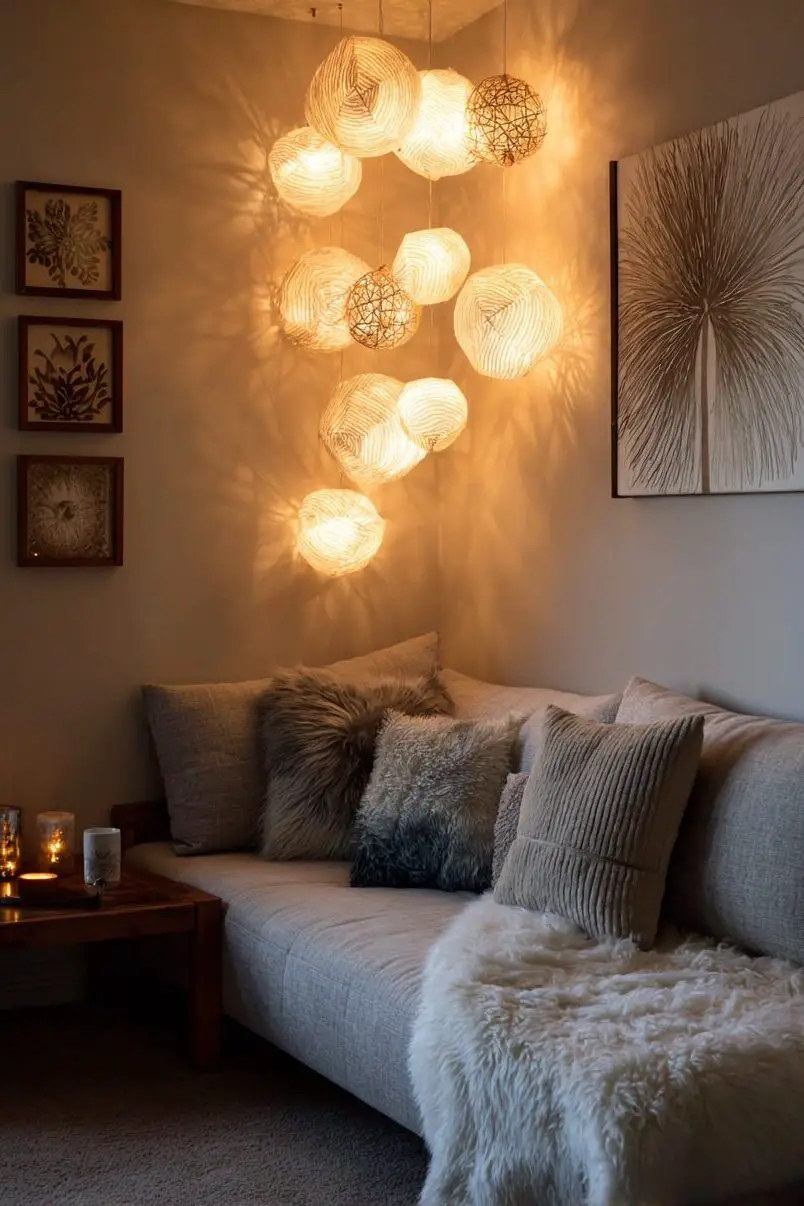
Harsh overhead lighting creates stress and tension, while thoughtfully layered lighting instantly transforms a space into a healing haven.
Install dimmer switches on all lighting fixtures to customize brightness according to your mood and needs throughout the day.
Salt lamps emit a warm, amber glow that many find incredibly soothing while potentially providing air-purifying benefits.
String lights aren’t just for college dorms—high-quality versions with warm LEDs create magical ambient lighting perfect for relaxation.
Floor lamps with upward-facing shades bounce soft light off ceilings for gentle, indirect illumination that avoids harsh shadows.
Candles provide not just light but also a meditative focal point—opt for natural soy or beeswax versions with cotton wicks to avoid toxins.
Himalayan salt candle holders cast an especially warm, dimensional light that enhances the candle’s natural glow.
Table lamps with fabric shades diffuse light beautifully and can be selected in colors that complement your overall color scheme.
Light therapy lamps can be incorporated into your decor for the mental health benefits they provide, especially during darker winter months.
Window treatments that filter natural light through semi-sheer fabrics create a dreamy atmosphere during daylight hours.
Mirrors strategically placed opposite windows amplify natural light and make spaces feel more expansive and airy.
Recessed lighting with warm-toned bulbs provides background illumination without visual clutter.
Wall sconces at eye level create intimate lighting zones perfect for reading or journaling corners within your healing space.
Light filtered through plants creates fascinating shadow patterns that add visual interest and connect artificial light to natural elements.
Battery-operated candles provide the flickering effect of real flames without fire hazards, perfect for pre-sleep relaxation.
Remember that darkness is equally important for healing—blackout options for when you need complete darkness for deep rest are essential components of a truly healing space.
Design Your Dream Room in Minutes!
🏡 Start Creating FREE →Paint Your Sanctuary with a Restorative Color Palette
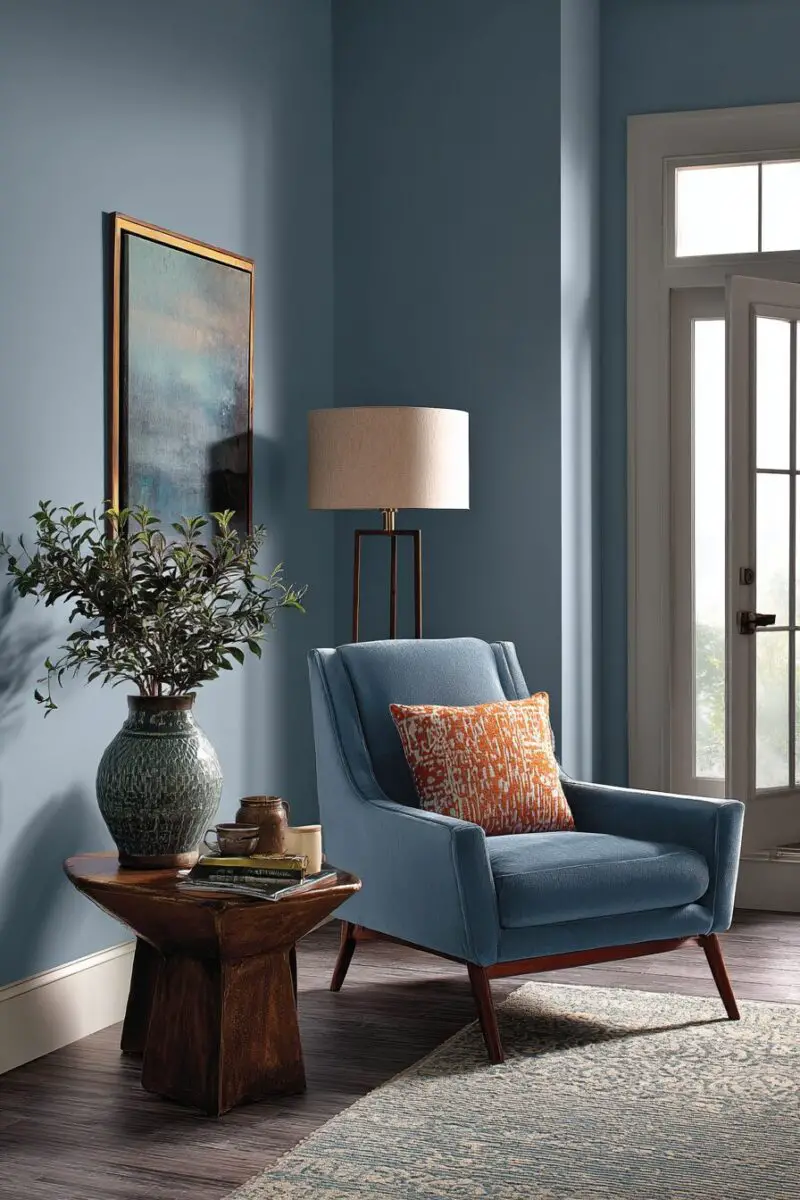
Colors affect your mood and physiology in profound ways that modern science is only beginning to fully understand.
Soft blues reminiscent of clear skies promote feelings of tranquility and have been shown to lower blood pressure and heart rate.
Gentle greens connect you to nature and create a balanced environment that feels simultaneously refreshing and calming.
Lavenders and soft purples encourage spiritual awareness and can transform a simple room into a space that feels sacred and special.
Warm neutrals like taupe, ivory, and soft beige create a grounding foundation that makes your space feel secure and nurturing.
The Japanese concept of “yutori” suggests that incorporating empty space and breathing room into your color scheme is essential for mental clarity.
Color blocking with two complementary calming shades can create visual interest without overwhelming your senses.
Avoid pure white walls which can feel clinical—instead opt for off-whites with subtle undertones that shift beautifully as natural light changes throughout the day.
Monochromatic color schemes using various shades of a single calming color create sophisticated depth without visual chaos.
An accent wall in a slightly deeper version of your main color adds dimension without jarring contrast.
Metallic accents in rose gold, brushed silver, or soft gold add subtle light-reflective properties that enliven your color scheme.
Take inspiration from spa environments which often use nature-based palettes that evoke water, stone, and natural fibers.
Test paint samples at different times of day before committing, as natural and artificial lighting dramatically affects how colors appear.
The 60-30-10 rule (60% dominant color, 30% secondary color, 10% accent color) provides perfect balance in your healing space.
Remember that glossy finishes reflect more light and energy, while matte finishes absorb energy and create a more restful environment.
Allow your color choices to flow from room to room with thoughtful transitions that maintain the peaceful feeling throughout your home.
Embrace Mindful Minimalism for Mental Clarity

Clutter directly impacts your mental state, creating visual noise that subconsciously stresses your system and blocks healing energy.
Marie Kondo’s famous question—”Does it spark joy?”—becomes even more relevant when curating items for a healing space.
Hidden storage solutions maintain minimalism while acknowledging the practical needs of daily life.
Multi-functional furniture prevents accumulation of too many pieces while serving your lifestyle needs efficiently.
The Danish concept of “hygge” reminds you that minimalism isn’t about stark emptiness but rather about making room for the things that truly matter.
Choose quality over quantity, selecting fewer pieces of greater craftsmanship and meaning rather than many disposable items.
Create intentional negative space that gives your eyes and mind places to rest when scanning your environment.
Remember that minimalism doesn’t mean lack of personality—carefully chosen items with deep personal significance create a space that resonates with your authentic self.
Digital minimalism extends your peaceful environment—create systems for managing electronic devices and their visual impact on your space.
Horizontal surfaces should remain largely clear, with only carefully curated items displayed thoughtfully.
The Japanese concept of “ma”—the meaningful space between things—can guide your decisions about placement and proportion.
Ask yourself whether each item serves a practical purpose, has deep personal meaning, or contributes genuine beauty to your environment.
Hidden charging stations and cord management systems reduce visual technology clutter that can disrupt the healing atmosphere.
Rotate seasonal or meaningful objects rather than displaying everything at once, creating a dynamic space that evolves while maintaining simplicity.
Establish daily rituals for maintaining your minimalist environment so it continues to serve your healing journey.
Remember that minimalism is a personal practice with no perfect endpoint—your version should support your unique needs and aesthetic preferences.
Incorporate Aromatherapy Stations for Sensory Healing
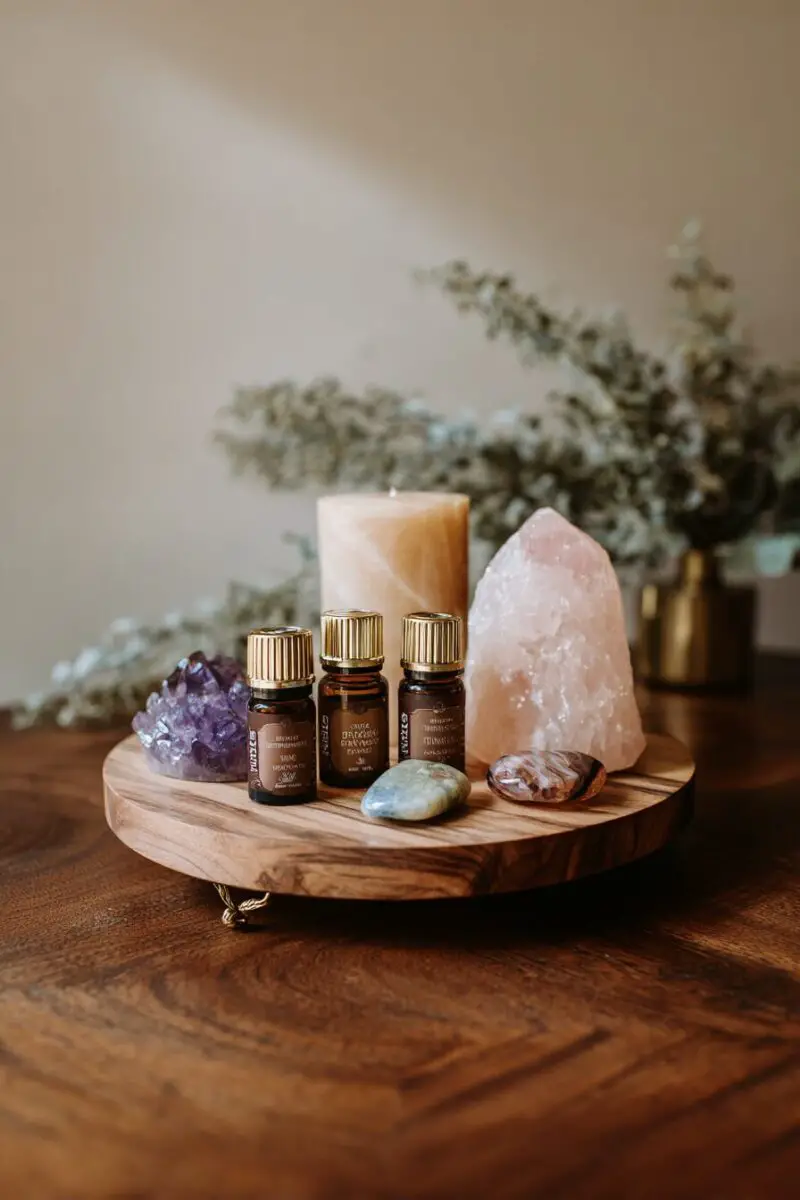
Scent bypasses your thinking brain and connects directly to your limbic system, making aromatherapy one of the most powerful and immediate healing tools available.
Strategic aromatherapy stations throughout your space allow you to access different scents based on your needs throughout the day.
Essential oil diffusers have evolved into beautiful design objects that complement rather than detract from your decor scheme.
Lavender promotes relaxation and sleep, making it perfect for evening aromatherapy in your healing room.
Citrus oils like sweet orange and bergamot uplift mood and can counteract seasonal depression during darker months.
Eucalyptus and tea tree provide respiratory support and create a spa-like atmosphere reminiscent of luxury wellness retreats.
Reed diffusers offer constant, subtle scent without requiring electricity or maintenance.
Natural beeswax candles infused with essential oils combine the benefits of gentle lighting and aromatherapy in one beautiful element.
Ceramic passive diffusers can be arranged as decorative objects while slowly releasing scent throughout the day.
Herbal bundles of dried lavender, rosemary, or sage can be tucked into drawers or hung as decorative elements that release subtle fragrance.
Scent should enhance rather than overwhelm your space—aim for the threshold where it’s noticeable but not dominating.
Seasonal scent rotations keep your aromatherapy practice fresh and aligned with the changing energy throughout the year.
Essential oil storage can become a beautiful display using amber bottles arranged on a wooden tray or custom shelf.
Avoid synthetic fragrances which often contain hormone-disrupting chemicals that counteract the healing benefits you’re seeking.
Remember that scent preferences are deeply personal and connected to memory—choose aromas that evoke positive associations for you specifically.
Custom blends created for your specific needs can become signature scents that your nervous system learns to associate with relaxation and healing.
TRENDING NOW
15 Innovative Craft Room Layouts for Any SpaceIncorporate Himalayan Salt Elements for Purification

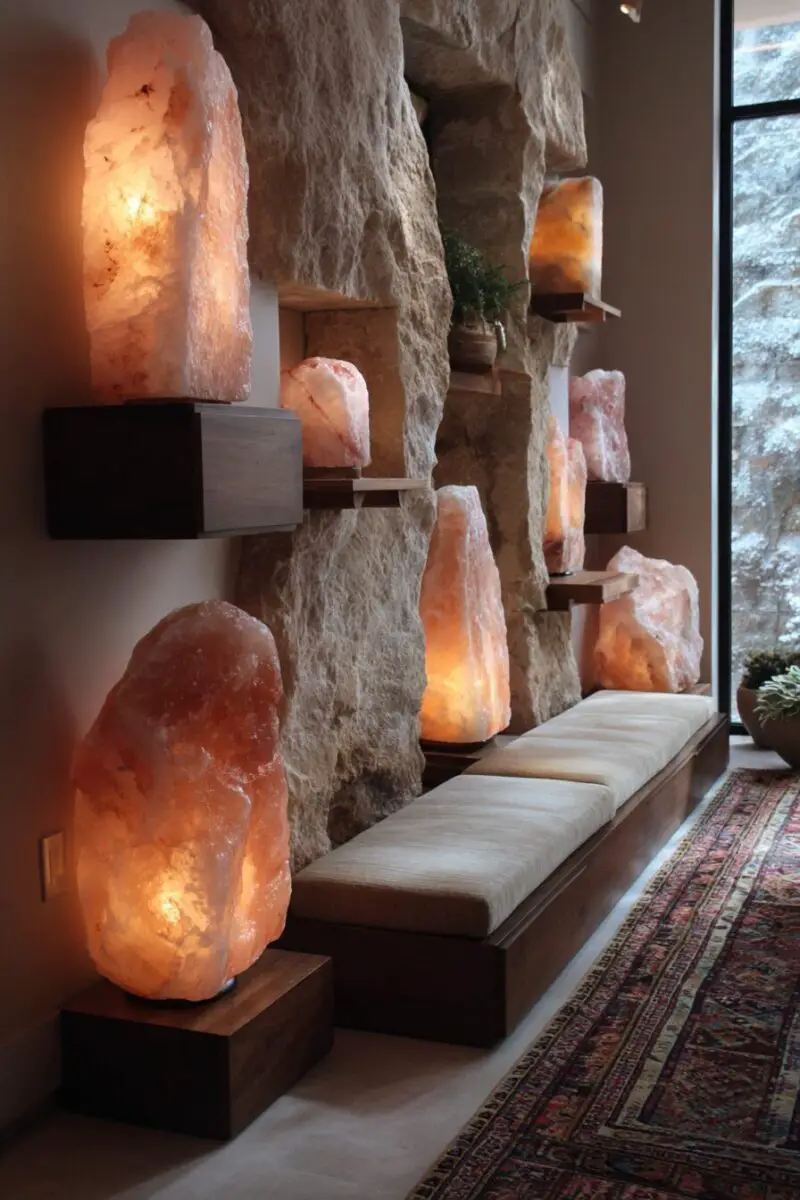
Himalayan salt doesn’t just add a warm pink glow to your space – it actively cleanses the air through natural ionization that benefits your respiratory system.
Large salt lamps become stunning sculptural elements while potentially neutralizing electromagnetic radiation from electronic devices that disrupt your energy field.
Install a salt wall feature—either built-in or as a portable panel—that serves as both functional air purification and a stunning visual focal point with natural color variation.
The soft amber glow produced by salt lamps mimics the calming effects of firelight, signaling to your nervous system that it’s safe to relax and regenerate.
Beyond lamps, consider salt candle holders, serving platters, or decorative bowls that introduce this healing element throughout your space in different forms.
Salt’s natural antibacterial properties make it practical as well as beautiful—serving boards made from salt blocks naturally resist bacterial growth.
The subtle mineral scent released by warmed salt creates an atmosphere reminiscent of ocean air, triggering positive associations with seaside healing.
Salt crystals in various sizes clustered together create dramatic light effects when illuminated, casting gentle patterns across nearby walls.
When selecting salt elements, look for variations in color from pale pink to deep rust—these natural variations add visual interest and indicate mineral content.
Each salt crystal contains ancient minerals from prehistoric seas, connecting your modern space to the primordial healing elements of earth’s history.
Position salt lamps near electronics like computers or televisions to potentially mitigate their energetic impact on your space.
The weight and solidity of salt objects adds grounding energy to spaces that might otherwise feel too ethereal or unanchored.
Salt elements naturally complement other earthy materials like wood, leather, and stone, creating a coherent material palette.
When properly cared for, salt decor elements can last indefinitely, developing unique patinas that record their history in your healing space.
For maximum impact, place salt lamps at varying heights—on floors, tables, and shelves—to distribute their gentle glow throughout the room.
Remember that genuine Himalayan salt has natural variations in color and texture—too-perfect appearance often indicates synthetic materials.
The gentle maintenance required—occasionally wiping with a slightly damp cloth—becomes a mindful ritual that connects you to your healing environment.
TRENDING NOW
Inspiring Women Cave Designs Just For YouCreate a Digital Detox Zone with Intentional Technology Boundaries
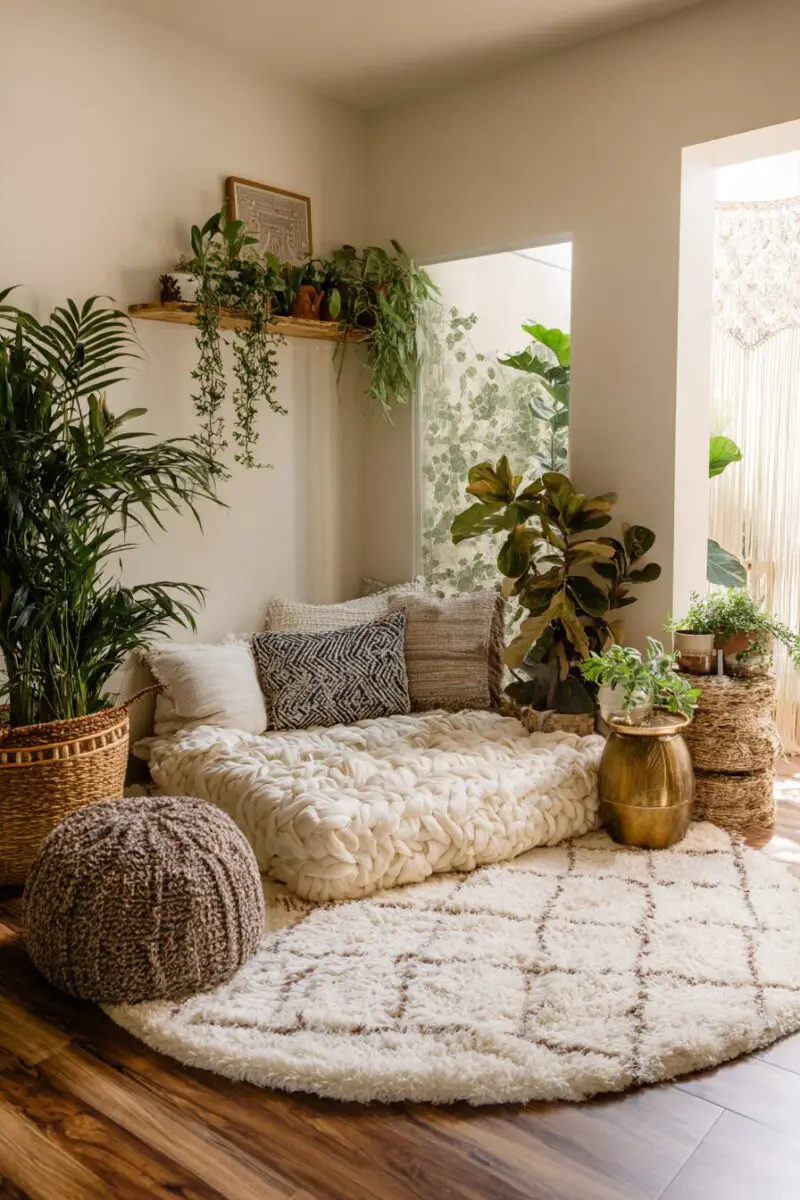
The constant bombardment of notifications, screens, and electromagnetic fields disrupts your natural rhythms and prevents deep healing from occurring.
Wooden charging stations placed near entrances encourage depositing devices before entering your healing space, creating both practical storage and a symbolic boundary.
Faraday fabric curtains or canopies can block electromagnetic fields while adding textural interest to your space.
Beautiful analog alternatives to digital tools—like hourglasses instead of timers, paper journals instead of apps, or printed books instead of e-readers—combine functionality with aesthetic appeal.
Dedicated technology cabinets with doors allow devices to be completely hidden from view during healing time.
EMF-blocking paint in subtle colors can create an energetically protected space without drawing attention to its functional purpose.
The Japanese concept of “ma” or negative space becomes particularly important in technology-free zones, allowing energy to flow without electronic disruption.
Mechanical rather than electronic options for necessary functions—like wind-up clocks or non-electric oil diffusers—maintain functionality without disrupting energy.
Plants that specifically filter air, like rubber plants and snake plants, help mitigate the poor air quality often associated with electronic equipment.
Technology-free zones naturally encourage more interpersonal connection and presence—consider seating arrangements that facilitate face-to-face interaction.
Designate specific paths for necessary cables and wires, using cable covers in colors that blend with your decor to minimize their visual impact.
Consider incorporating grounding elements like bare copper or authentic crystals that potentially help mitigate EMF effects when complete elimination isn’t possible.
The soft edges and organic forms found in natural materials provide visual relief from the hard angles and artificial materials of technology.
Natural light becomes even more important in technology-free zones—position seating to take advantage of windows and skylights.
Create dedicated, beautiful storage for analog entertainment—board games, playing cards, or musical instruments—that encourages screen-free leisure.
Remember that digital detox spaces should feel abundant rather than deprived—fill them with sensory pleasures that make the absence of technology feel like a luxury rather than a sacrifice.
TRENDING NOW
Unlock Your Dream: 13 Envious Tree House DesignsDesign a Chromotherapy Station with Intentional Color Healing
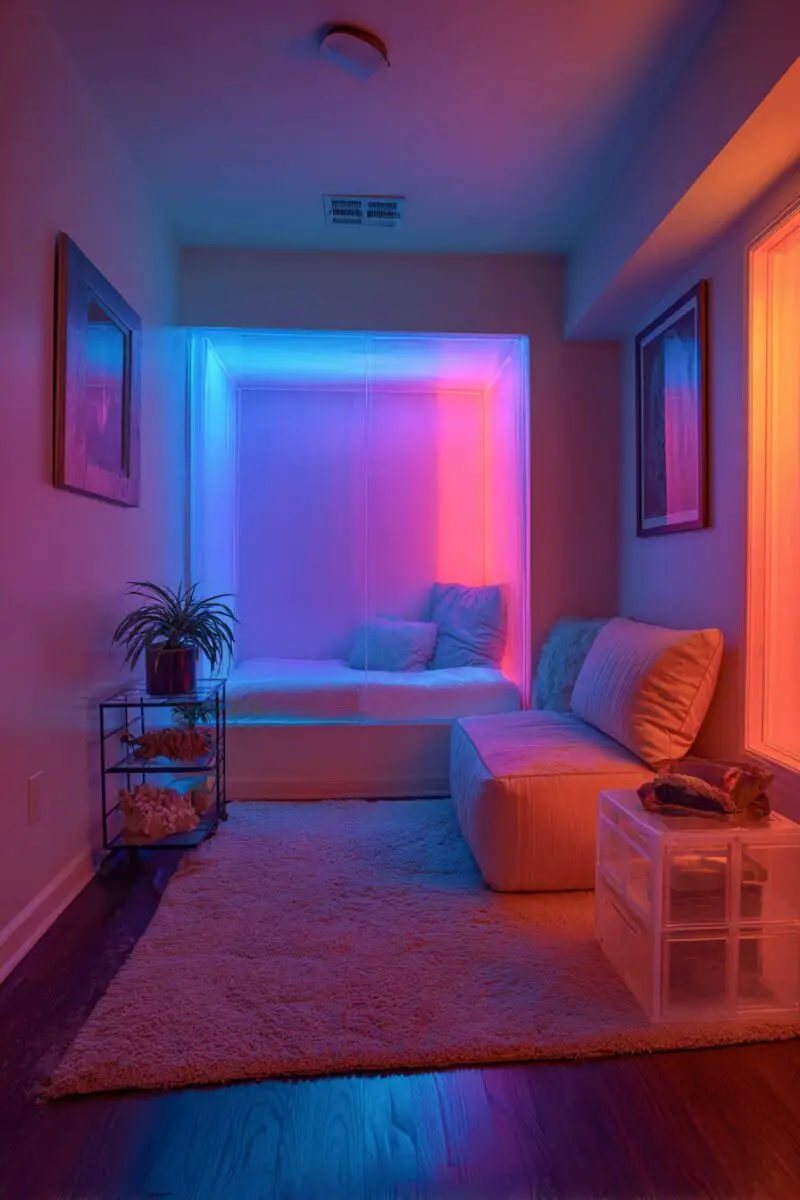
Color therapy isn’t just aesthetic preference—it’s an ancient healing practice that uses specific wavelengths of light to balance energy and promote wellness.
Red light stimulates energy and circulation—perfect for morning use or when you need to overcome lethargy and stagnation.
Blue light calms nervous system activity and reduces blood pressure—ideal for evening relaxation or anxiety reduction.
Green balances and restores—the color of nature creates an immediate sense of harmony and is particularly healing for heart-related issues.
Yellow stimulates mental clarity and optimism—helpful during seasonal depression or when creative thinking is needed.
Purple promotes spiritual awareness and intuition—beneficial for meditation spaces or areas dedicated to inner work.
Create a color therapy reading nook with adjustable lighting that can shift between energizing and calming spectrums depending on your needs.
Consider color therapy glasses or eye pillows in different hues for direct, personal application of color healing.
Crystal prisms hung in windows cast rainbow light patterns that shift throughout the day, providing constantly changing color therapy.
Color-changing shower heads or bath lights transform everyday cleansing routines into chromotherapy sessions.
Interactive color panels that respond to touch or movement add playful elements to your chromotherapy approach.
Light boxes with interchangeable colored filters allow for customized color therapy without technological complexity.
Create a color therapy journal to track how different hues affect your mood, energy, and physical sensations over time.
Remember that personal color associations matter—a color that evokes negative memories for you won’t have the same healing effect regardless of its traditional properties.
Consider gradual color transitions throughout your space that guide energy flow from more active to more restful areas.
Stained glass elements create rainbow light patterns that change with the sun’s movement, adding dynamic color therapy that follows natural rhythms.
Remember that even subtle color therapy—like pale blue ceiling paint that suggests expansive sky—can have profound subconscious effects on your nervous system.
Establish a Gravity Grounding Station for Deep Relaxation

Floating has become popular for sensory deprivation, but grounding through gravity offers equally powerful but opposite healing benefits.
Weighted blankets (ideally 10% of your body weight) activate deep pressure receptors that naturally reduce anxiety and promote the release of calming neurotransmitters.
Grounding mats that connect to the earth’s electrical field can be incorporated under area rugs or as dedicated meditation pads.
Heavy stone or metal elements placed strategically throughout your space provide visual anchors that subconsciously promote feelings of stability.
Sand therapy trays—similar to Zen gardens but with heavier materials—provide tactile grounding through repetitive, mindful movement.
Hammocks or cocoon chairs create gentle compression that soothes the nervous system while allowing supported movement.
Low-profile furniture arrangements naturally encourage a closer connection to the ground, activating ancient feelings of security.
Heavy sound healing instruments like large gongs or bass singing bowls provide both acoustic and physical weight that anchors energy.
Sand-filled or grain-filled heating pads mold to your body while providing substantial weight and comforting warmth.
Heavy curtains that physically block light create both visual darkness and the subtle pressure of weight in your healing environment.
Remember that grounding practices are particularly important in upper-floor apartments or homes where physical connection to earth is limited.
Substantial wooden furniture with visible weight and stability provides psychological comfort that lightweight contemporary pieces often lack.
River stones heated in the oven and placed in fabric pouches become simple yet effective grounding tools that can be integrated into your decor.
Remember that grounding is both energetic and physical—the literal weight of objects in your healing space directly affects your nervous system’s sense of security.
TRENDING NOW
13 Moody Home Library Designs To Inspire YouIncorporate Time-Shifting Elements That Slow Your Perception

In our hyper-accelerated world, decor elements that literally alter your perception of time’s passage can create profound healing effects.
Slow-motion elements like lava lamps, sand art displays, or water timers provide meditative focal points that naturally decelerate your thought patterns.
Living plants that respond to light by opening and closing throughout the day connect you to natural time rhythms beyond digital schedules.
Moon calendars or solar tracking displays connect your space to celestial rhythms that have guided human healing for thousands of years.
Kinetic art pieces with gentle, hypnotic movements create visual anchors that slow breathing and heart rate through entrainment.
Projections of slowly shifting light patterns (either through simple prisms or programmable lights) create subtle environmental changes that unfold gradually.
Terrariums or small ecosystems contain natural life cycles visible in miniature, providing perspective on personal healing timelines.
Incorporate historical elements that connect to different time periods—antiques or artifacts that carry energy from slower-paced eras.
Sound elements with deliberate timing—like singing bowls programmed to chime hourly or gentle gongs—create auditory time markers that feel ceremonial rather than hurried.
Slow-release scent elements like naturally evaporating essential oils (rather than electronic diffusers with timed bursts) create gradual sensory experiences.
Visual art that rewards extended viewing with gradually revealed details encourages slowing down to truly see what’s before you.
Traditional crafts like weaving frames or pottery wheels can become both decorative and functional elements that connect you to time-honored slow processes.
Materials that visibly age well—like leather that develops patina or copper that gradually oxidizes—make the passage of time beautiful rather than something to fear.
Remember that a healing environment should engage all your senses—sight, sound, touch, smell and even taste through herbal teas or infused waters.
The most effective healing spaces reflect your authentic self rather than copying spiritual or wellness trends that don’t genuinely speak to you.
Your healing space is a living environment that can adapt and change as your needs evolve through different seasons and life phases.
The most important element is your intention—even simple changes made mindfully can transform the energy of your home into a powerful healing force in your life.


